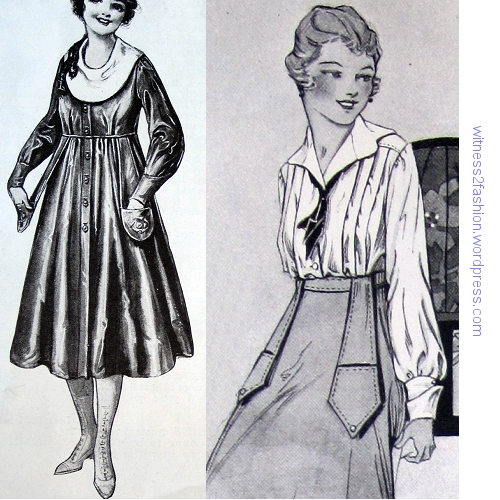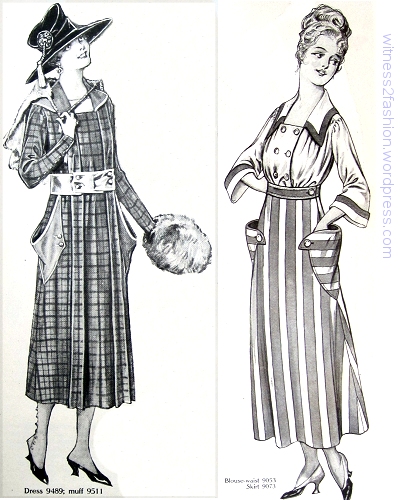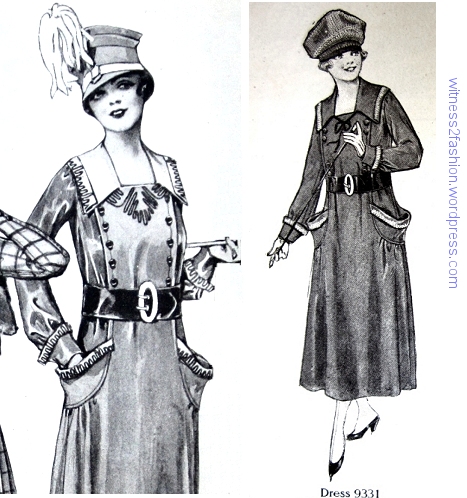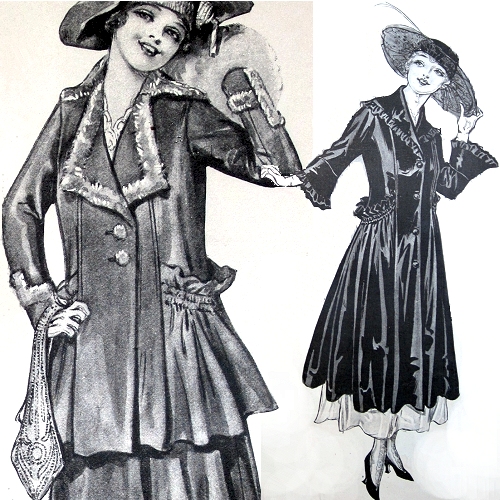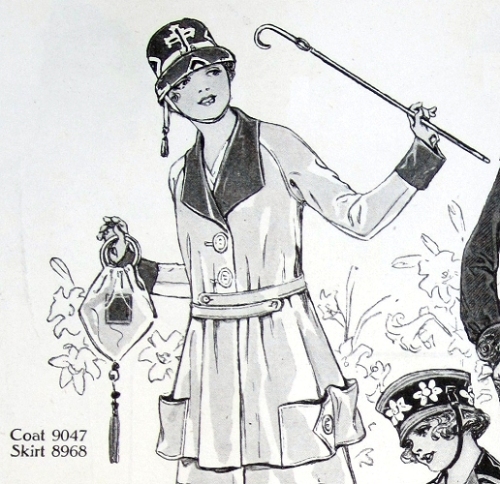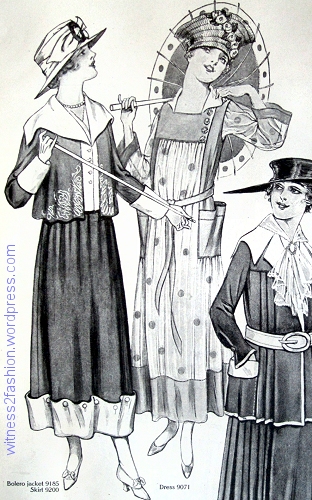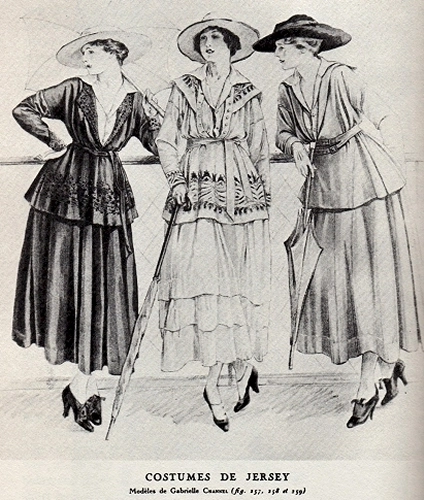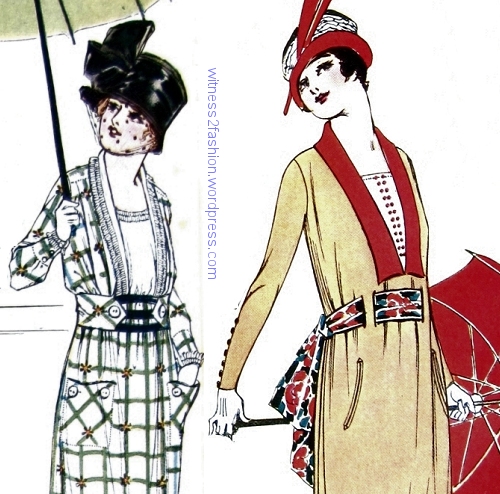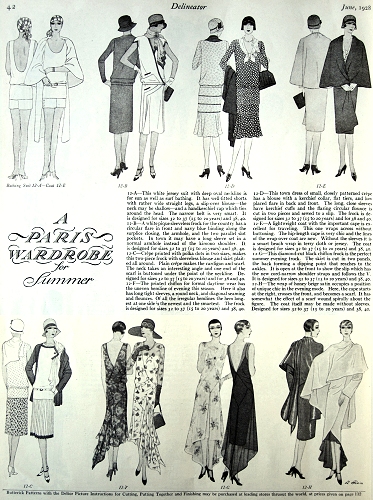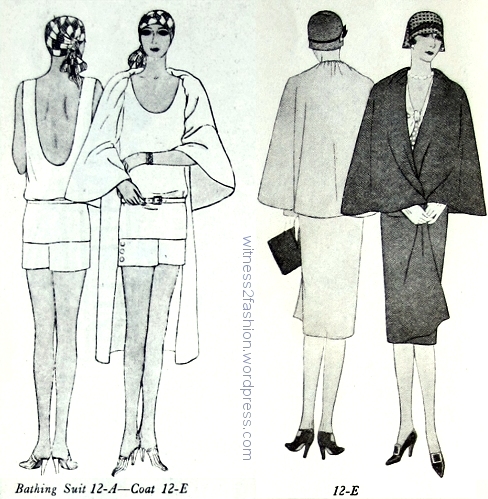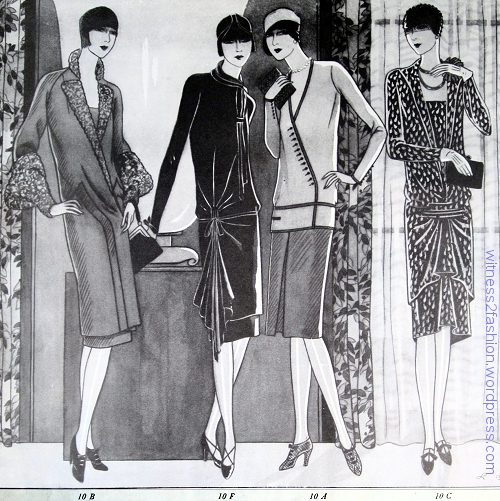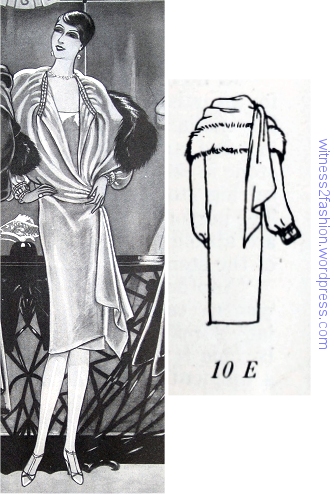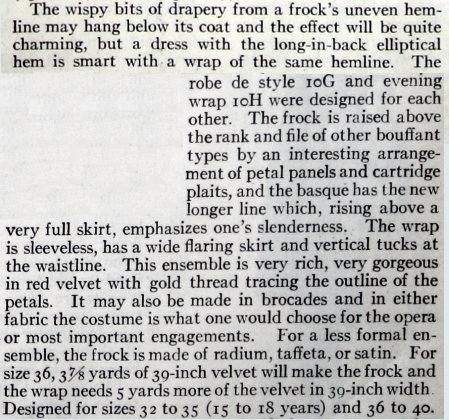
One of 64,000 pattern images you can find online at the Commercial Pattern Archive.
I know I recommend the online Commercial Pattern Archive at University of Rhode Island too often, but it just keeps revealing new reasons to visit. (Online Inventory last time I checked: 64,681 sewing patterns; mostly 1840s through 1970s.)
I can’t link to CoPA images anymore, because users now need to create a login, but you just create a user ID name and a password, and log in to use a totally free website! I never get email from them.

Two Butterick patterns from February, 1922. Delineator.
I’ve been sorting through my Delineator photos from 1922, and happened to log in to CoPA to check construction details — not really expecting to find much. However, I found a surprisingly large number of Butterick patterns from 1922 archived — and that means images of both back and front of the pattern envelope. You can see the shape of the pattern pieces!

“Armistice” blouse 1922 pattern The Commercial Pattern Archive (CoPA) has put over 60,000 vintage patterns online.
If you are trying to replicate a vintage pattern, whether you use drafting or draping, seeing the shape of the original pieces is very helpful. And if, like me, you have no intention of re-creating the pattern, (that used to be part of my job) you can still learn a lot about vintage clothing construction.
NOTE: The images from CoPA that I show here do not reflect the quality of CoPA images online. Because I couldn’t download them directly, I printed them, scanned them, and put them into a “500 dpi on the longest side” format. Unfortunately, I scanned the prints at the “black & white” resolution instead of at the “photograph” resolution. Image quality was lost on my scanner, not CoPA’s.

This bad image is not what Butterick 4025 looks like at the CoPA site. (https://copa.apps.uri.edu/index.php)
Elastic in 1920’s garments
There was a time when I was suspicious of any so-called vintage 1920s’ garments that depended on elastic. That was just my ignorance, based on “book learning” and classroom generalizations. Once I started really paying attention to vintage pattern magazines and pattern envelopes, my mind opened a bit!
All of these 1922 patterns include casing for elastic at the (usually lowered) waist.
Tunic Blouse 3462

Butterick tunic blouse 3462 from Delineator, January 1922.
If you sew, you know that there is a lot of information on the pattern envelope that you won’t find in the pattern’s catalog description.
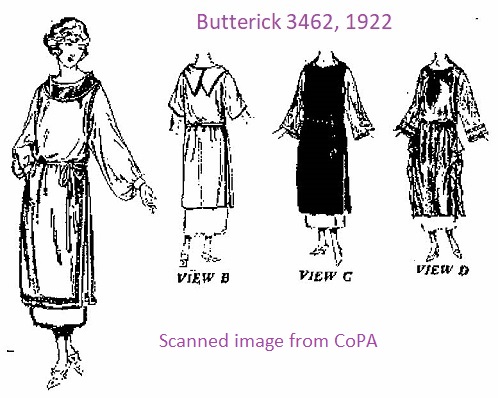
CoPA shows images from the front and back of the pattern envelope whenever possible. The version at top right shows the tunic with “cascades” at the sides.

Pattern 3462 included a variation with “cascade” panels on each side, and the information that the waist could have elastic.

I’m surprised that there is no elastic casing pattern included, but it was mentioned in Delineator magazine’s pattern description (January 1922, p. 26.)
Dress 3460

Butterick 3460, Delineator, January 1922, keeps its shape with elastic at the slightly dropped waist. (Left, a Spanish comb in her hair.)

The front of the pattern envelope, from the Commercial Pattern Archive.
“Ladies’ and Misses’ One-Piece Dress, “Closed at the Back, with or without Elastic in Casing at Low Waistline or Blouse Body Lining.”

The pattern pieces for Butterick 3460, from CoPA.

This detail shows an inside belt and length of elastic. It also reminds us that the 1920s’ blouson effect was sometimes achieved with an optional inner bodice lining. (With bust dart!)

Pattern description from Delineator, January 1922.
This simple dress was also illustrated with a matching cape:

Butterick dress 3460 with matching cape, Butterick 3589. Delineator, March 1922.

Coat 3594: This coat, which I find bulky but oddly appealing, could be controlled with elastic at the waist:

Butterick coat 3594 is gigantic, but beautifully trimmed…. Delineator, March 1922.

Butterick coat 3594 in Delineator magazine illustrations.

The front of the pattern envelope. In the online CoPA archive, the image is much clearer (and they have several copies of this pattern!)

Pattern pieces from the envelope. CoPA will tell you how to print a larger image (See CoPA Help)
Rubber elastic tends to degrade faster than the other components of the garment, so the elastic itself may not be present in a vintage dress (or underwear.) But these patterns confirm its use.
I was surprised to see this “Armistice” blouse [Not what they were originally called] issued in 1922. It can have elastic in a casing at the waist:

The “Armistice blouse” was still available as a pattern in the 1920s. The center panel is the “vestee.”

Pattern pieces for Butterick 3672 from CoPA.
Searching CoPA for a specific pattern: “Search by Pattern Number”
After you create a log-in at CoPA, you can search for any pattern by number (e.g., type in “3672” and select “Butterick” from the pattern company pull-down list. Chose “Any” collection. Results will show you images and links to further information — including the date for every pattern they have! Say you own Vogue 1556, by Yves St. Laurent? CoPA’s archive number will tell you it was issued in 1966. (If you have an approximate date, you can also date patterns which are not in the archive by finding where they would be in the company’s number sequence and checking their resemblance to other styles and envelopes from the same year….)
Browsing through a year or group of years: use “Complete Search”
Or you can click on “Complete Search” and search by year (or a period of several years, e.g. 1920 through 1926 — just hold down the shift key while selecting.) You can limit your search in many ways (e.g., “male” + “adult;” or “1945” + “hat” +”McCall;” or “1877 + “Any”….)

One of hundreds of McCall patterns from the 1920s you can find at the Commercial Pattern Archive. McCall 5315 from 1928.
Trying CoPA: If you love a specific decade, start with one year (e.g., “1928” + “McCall” + Collection: “Any”) By the mid-1920s, McCall pattern envelopes had beautiful, full color illustrations. New to CoPA? Start with McCall in the 1920s, or try McCall in 1958! Less well-known pattern companies are also well-represented. Scroll though the “Pattern Company” pull-down for Hollywood, Advance, La Moda, Pictorial Review, DuBarry, & dozens more.
TIP: Be sure you set the final category (Collection) to “Any” if you want to search the complete archive. Otherwise, you’ll miss some good stuff! Also, search more than one way. “Medical uniform” (Category: Garment) got 20 results; “Nurse uniform” (Category: Keyword) got 38. It’s not a complaint; just what happens when many people try to describe things for a spreadsheet.
Next: Pattern pieces for side drapes (“cascades”.)

The dress at right has a cascade at each side.


















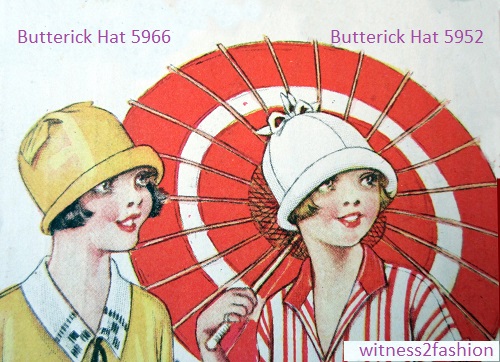








 The bow at the top did not need to be self-fabric. In later illustrations, this hat was often shown without the bow.
The bow at the top did not need to be self-fabric. In later illustrations, this hat was often shown without the bow.



























































